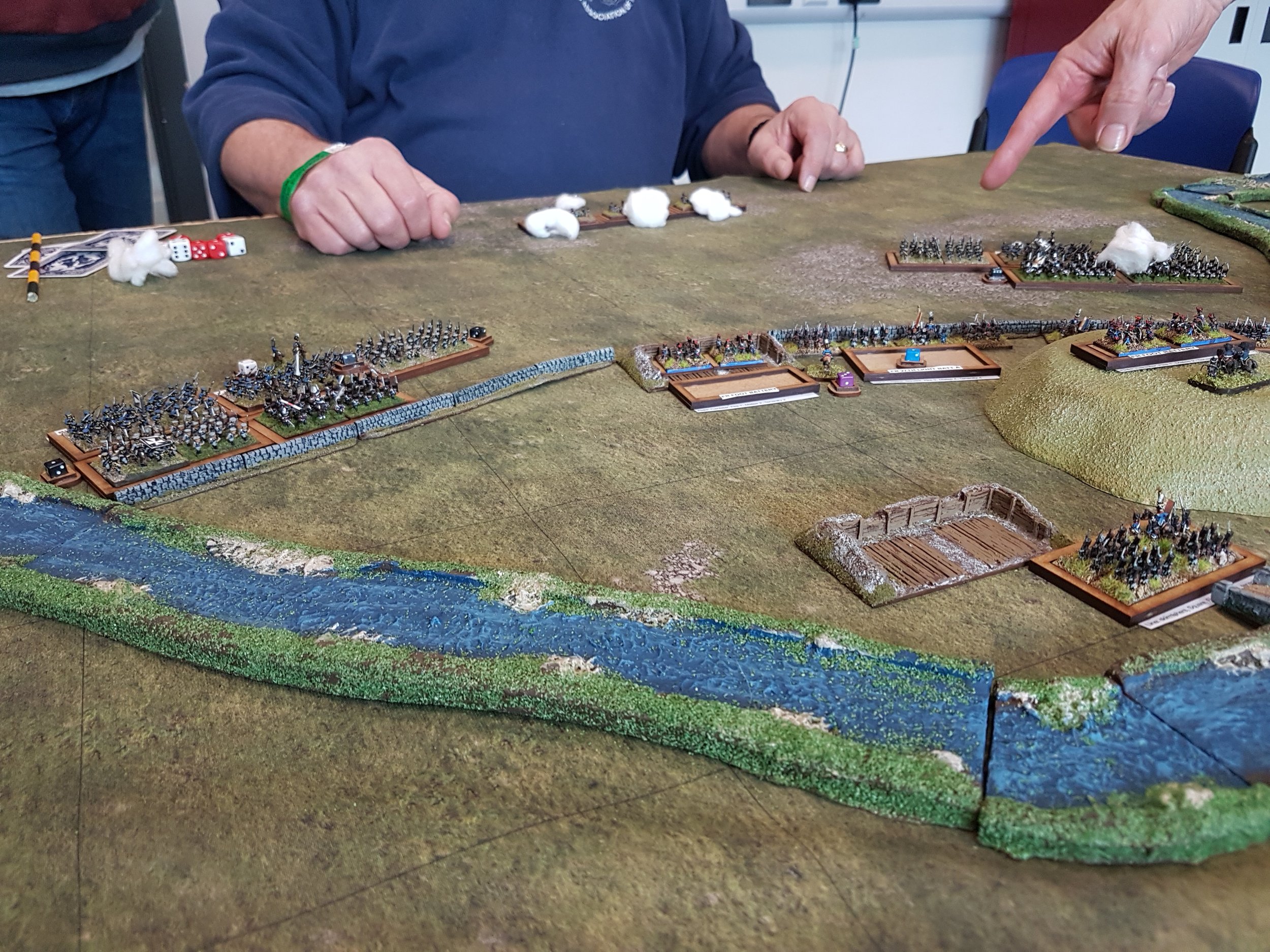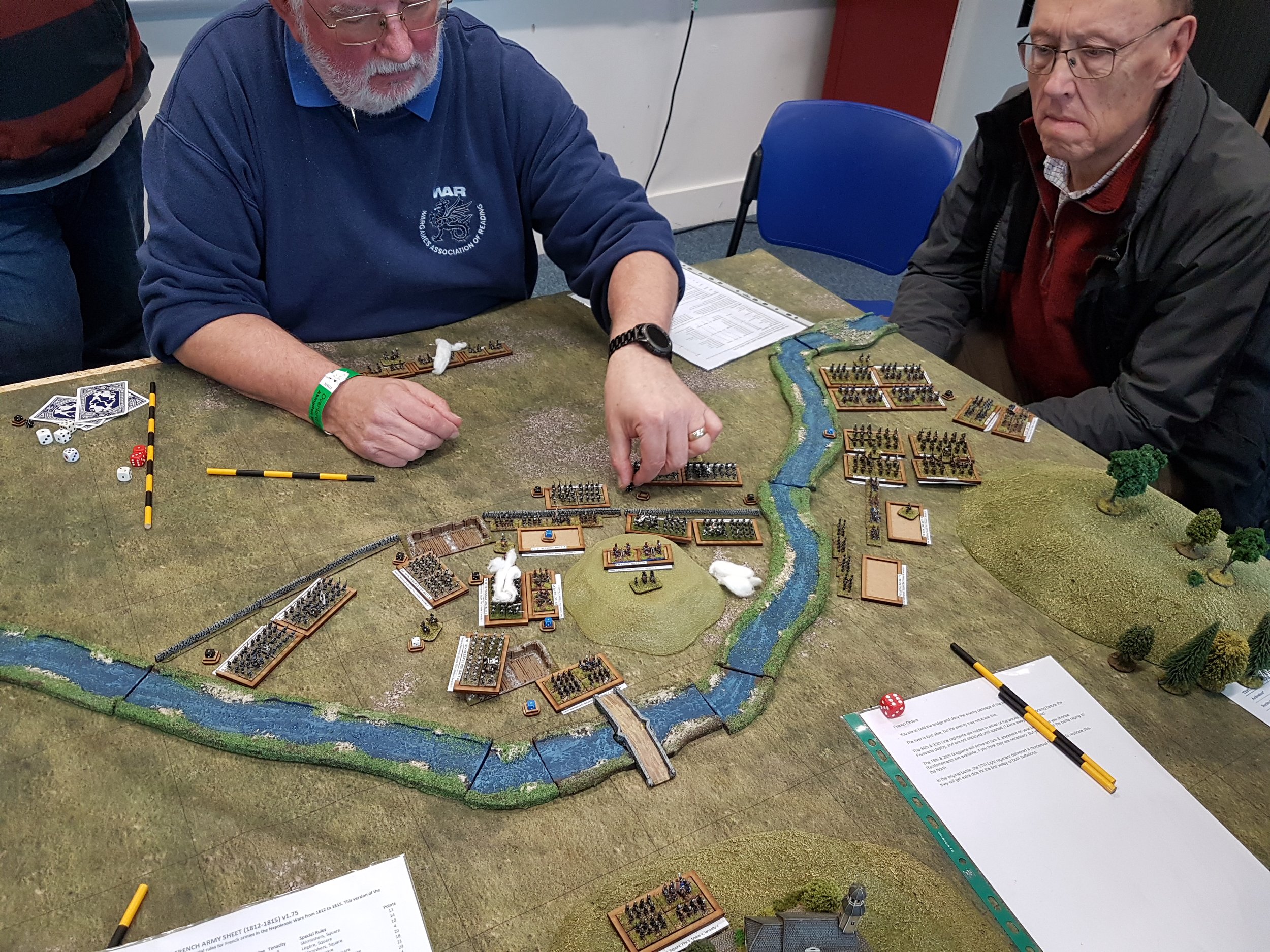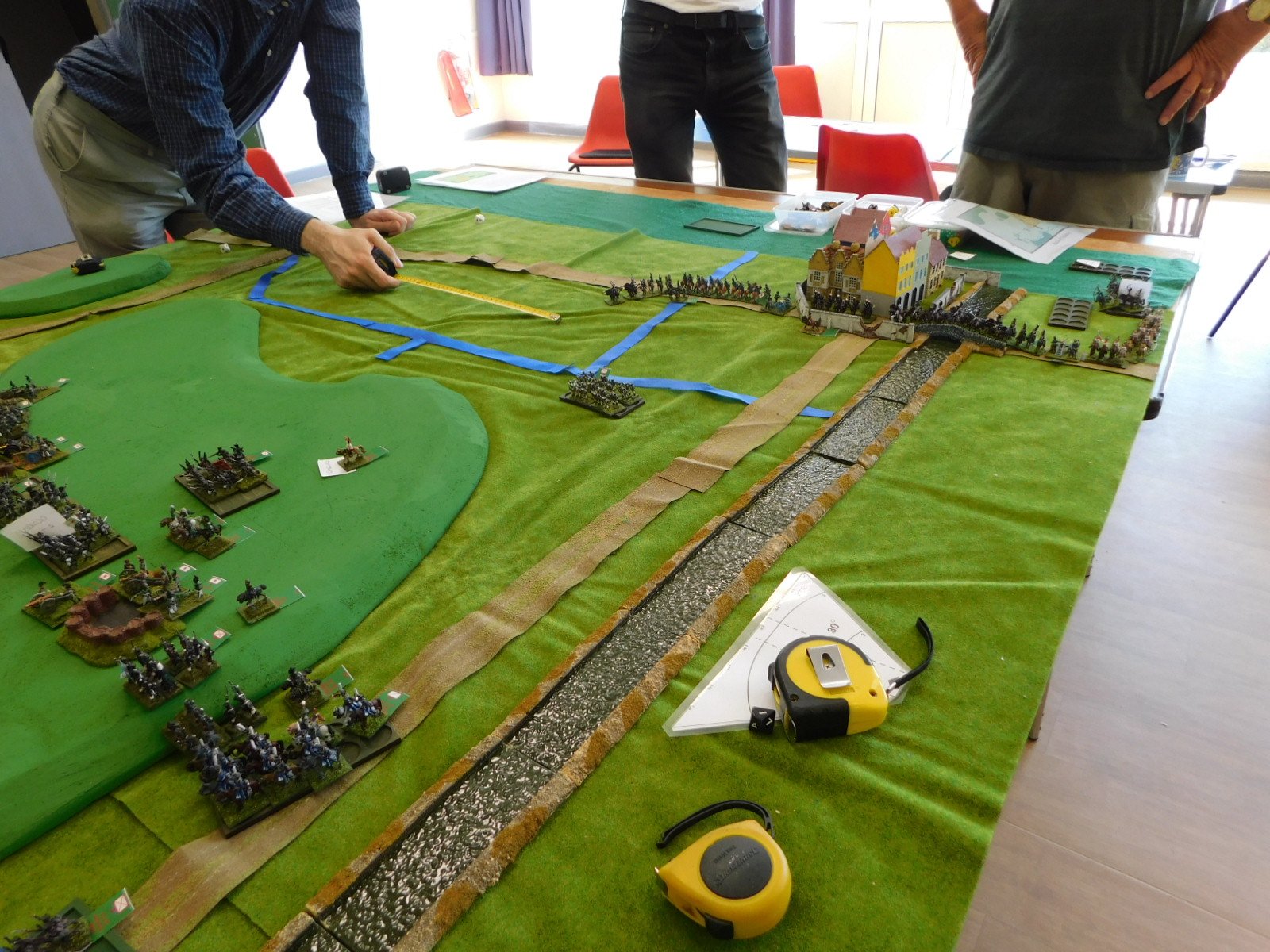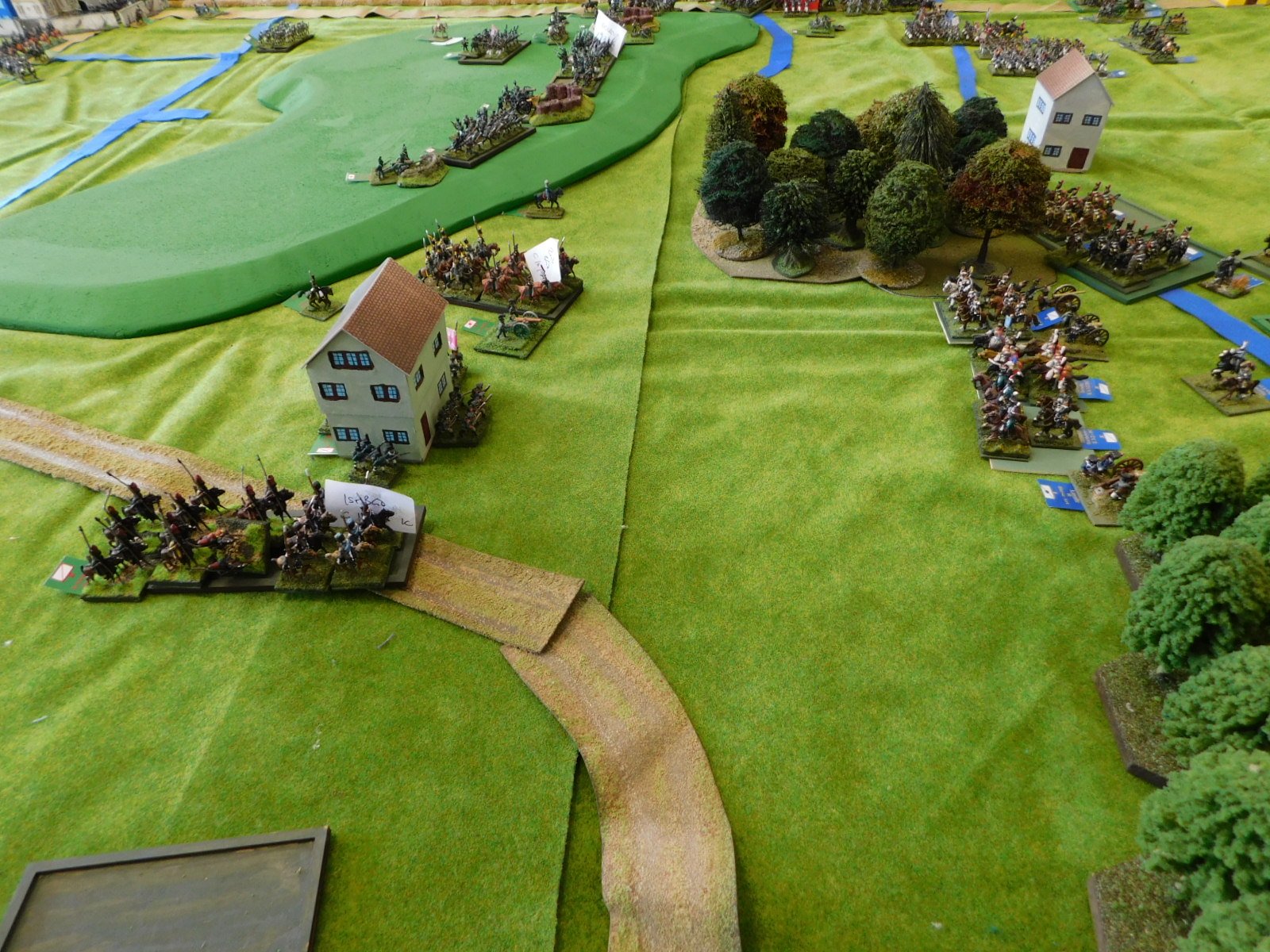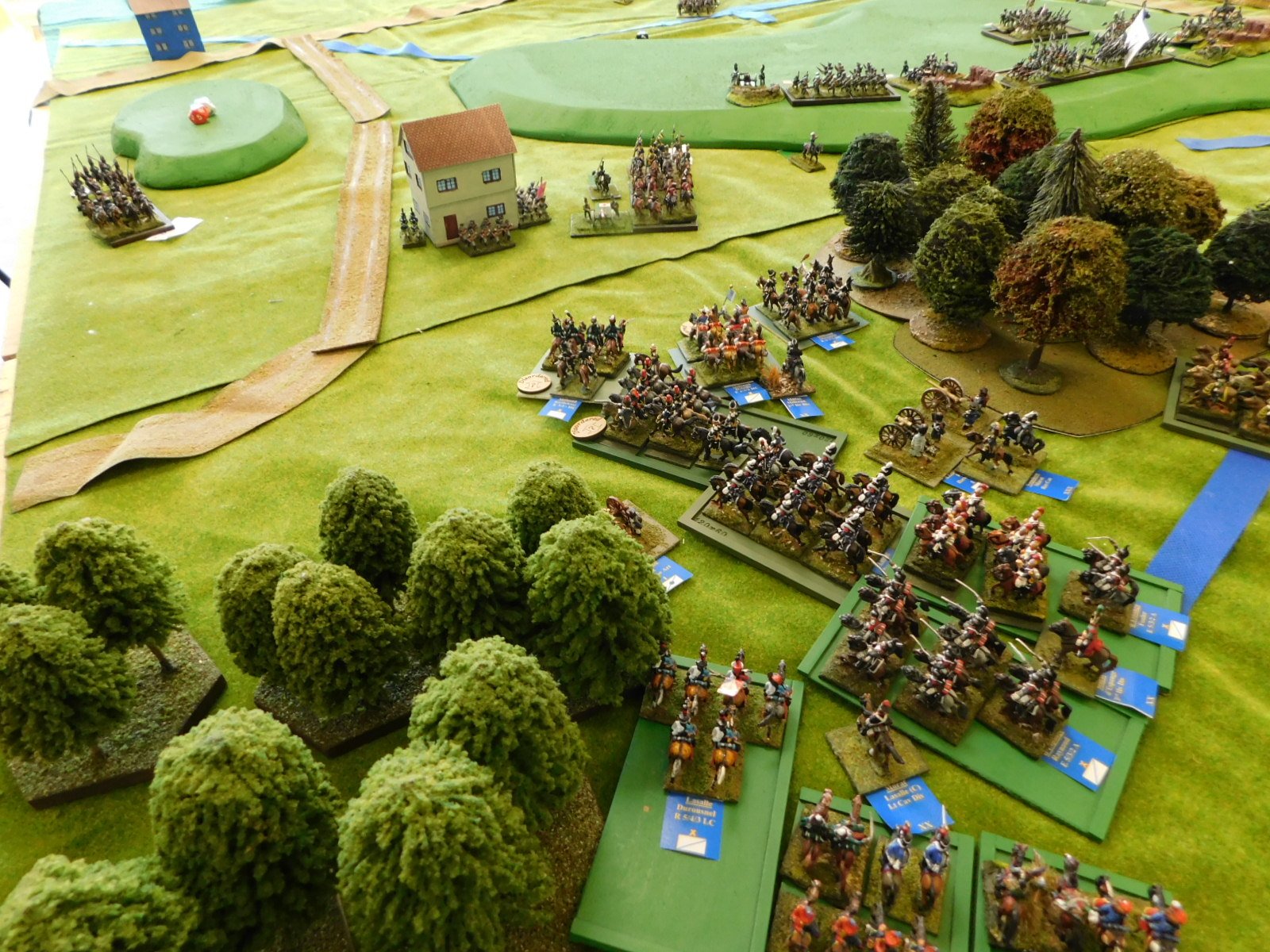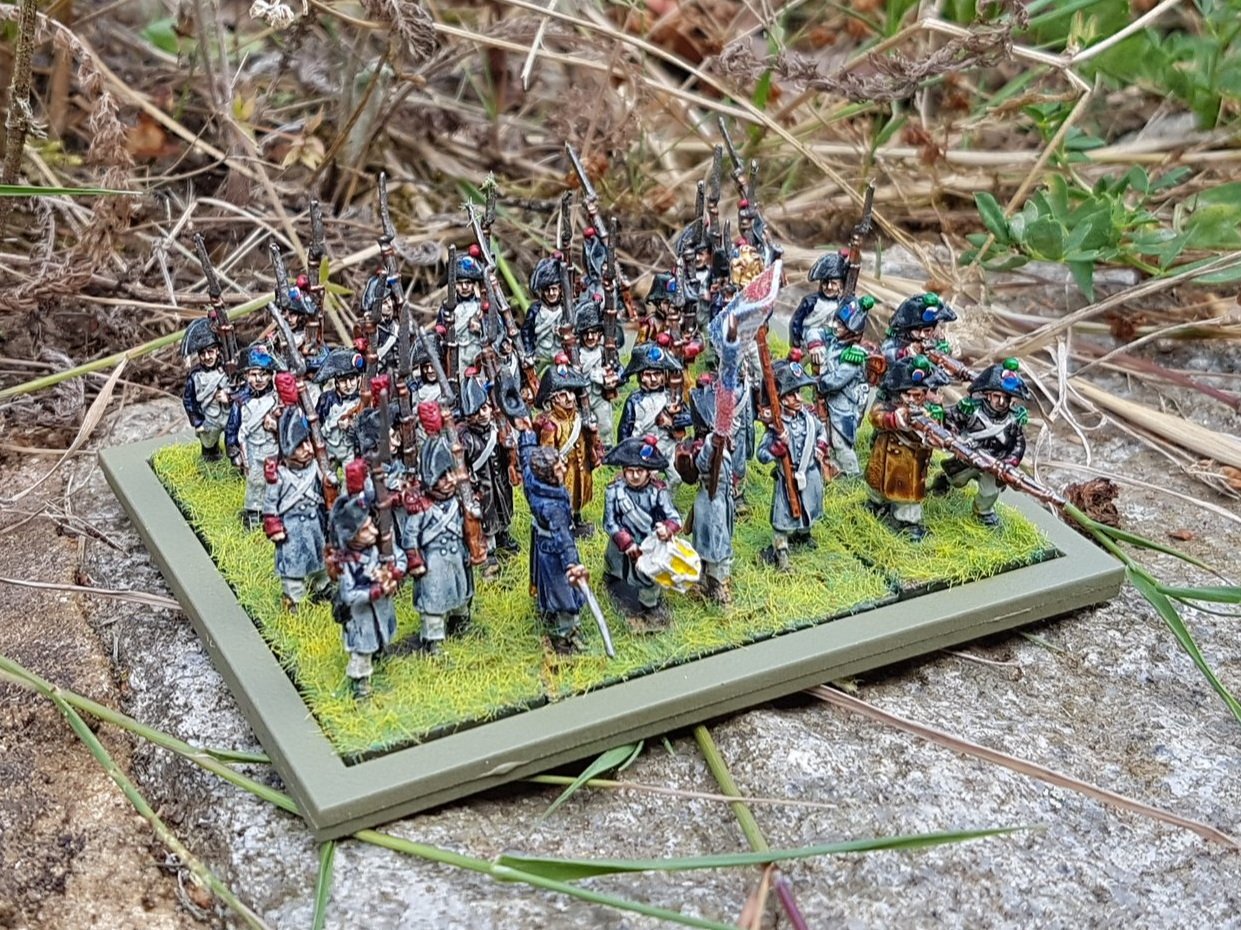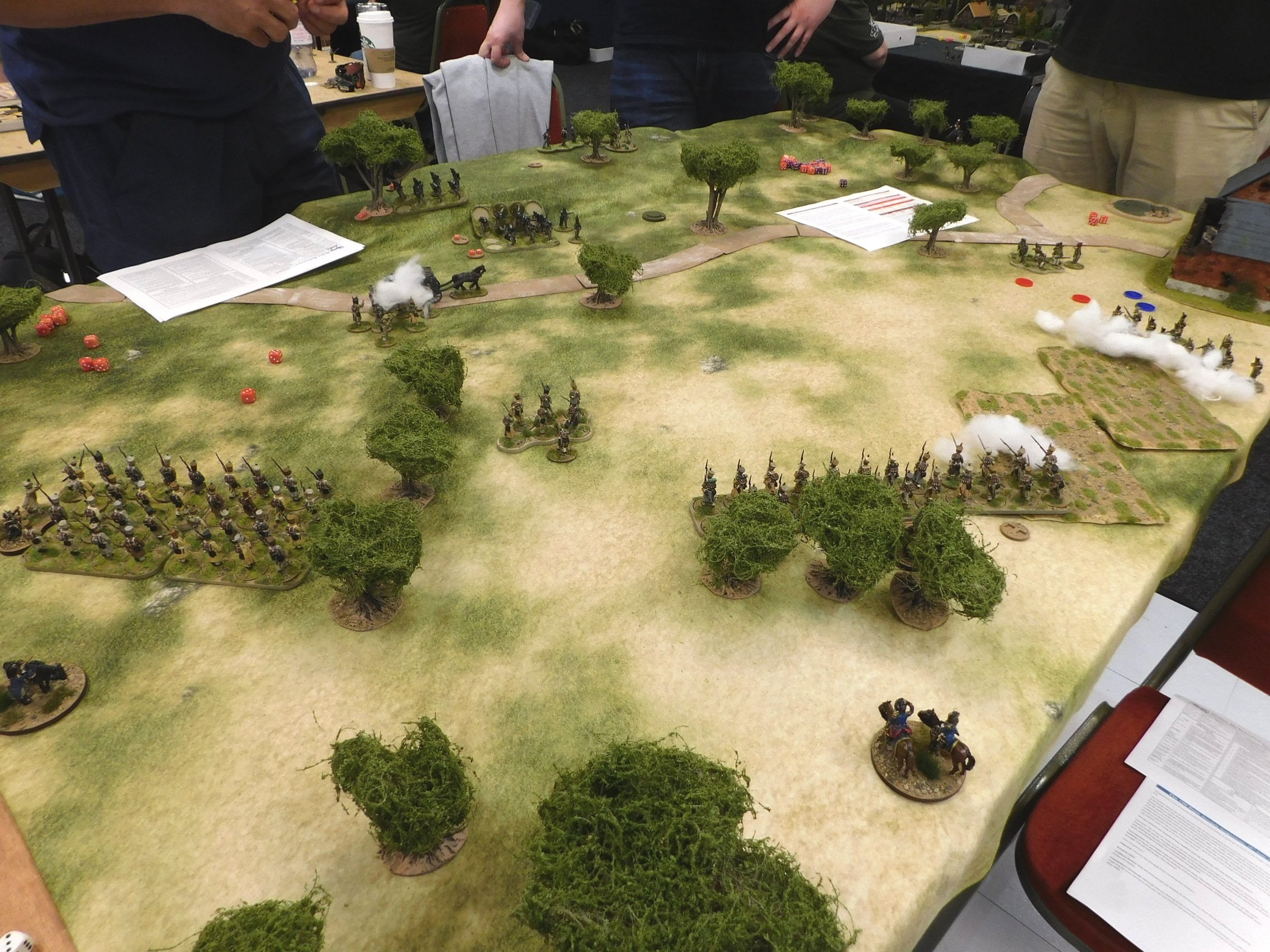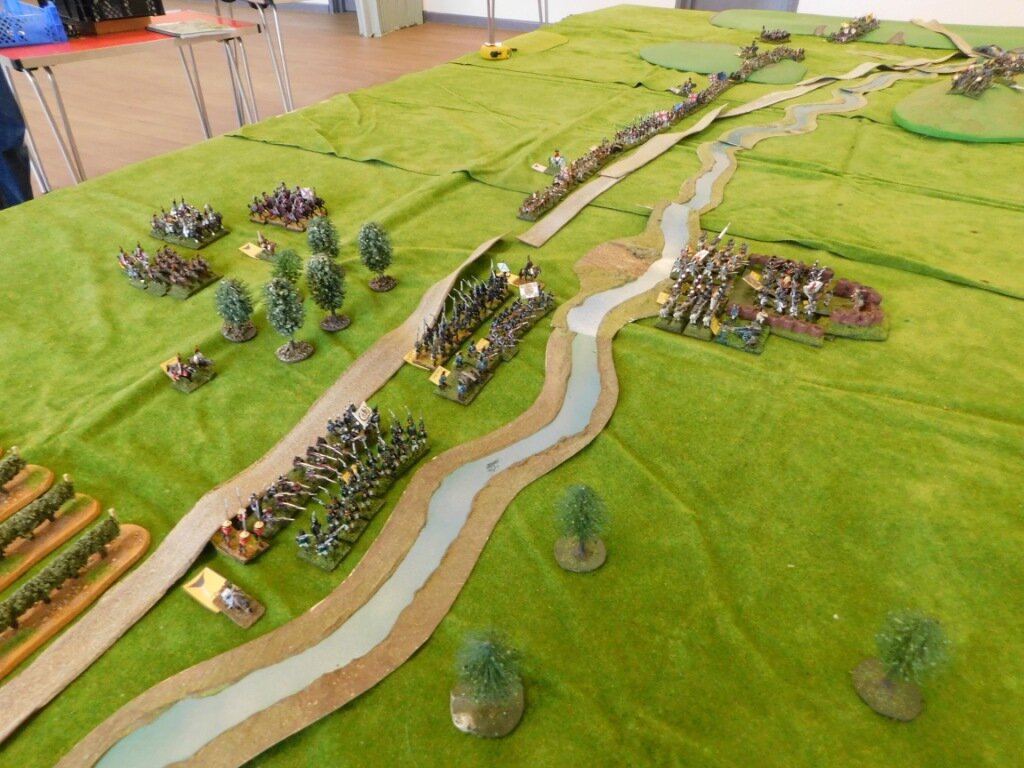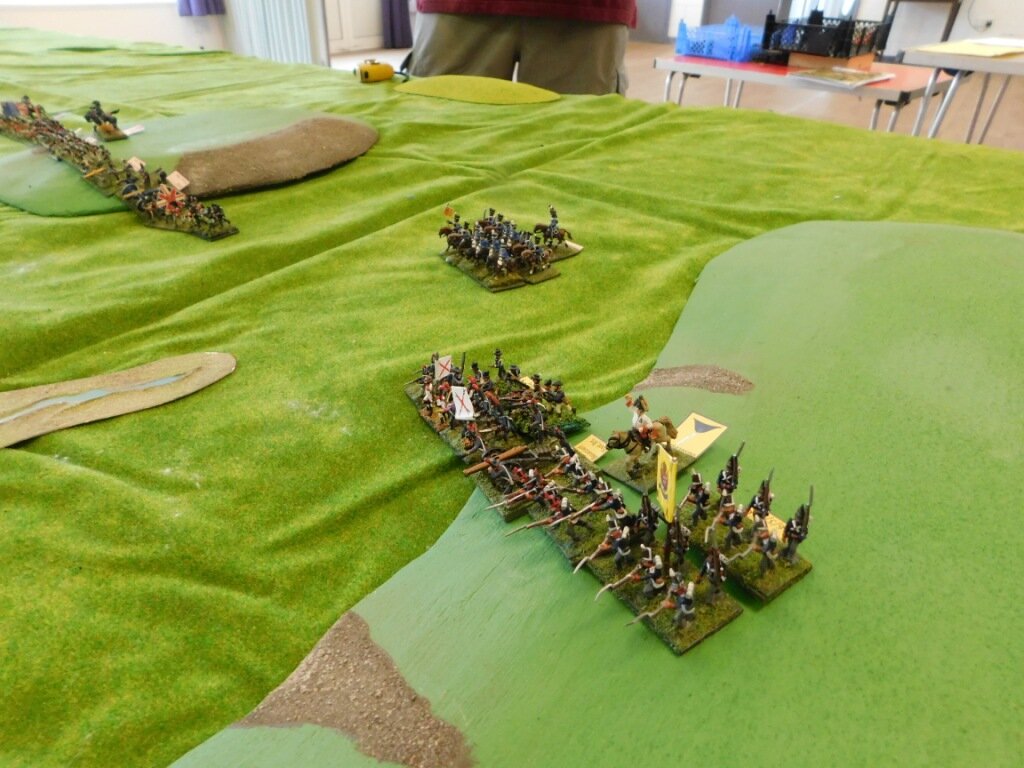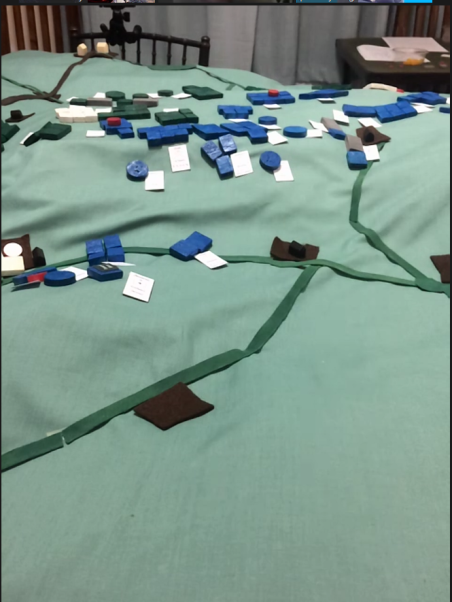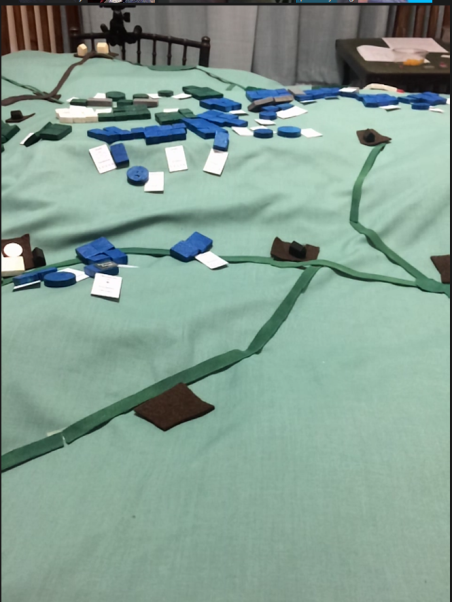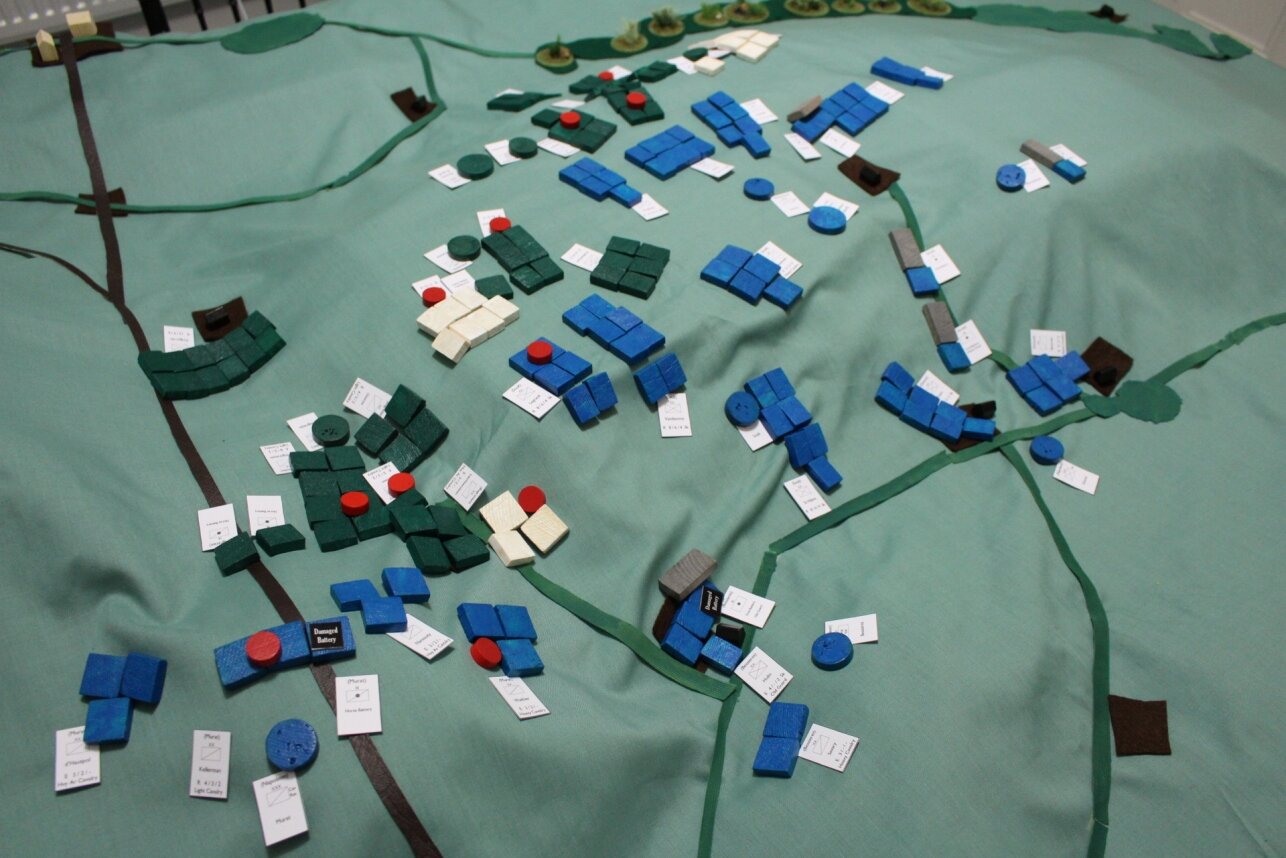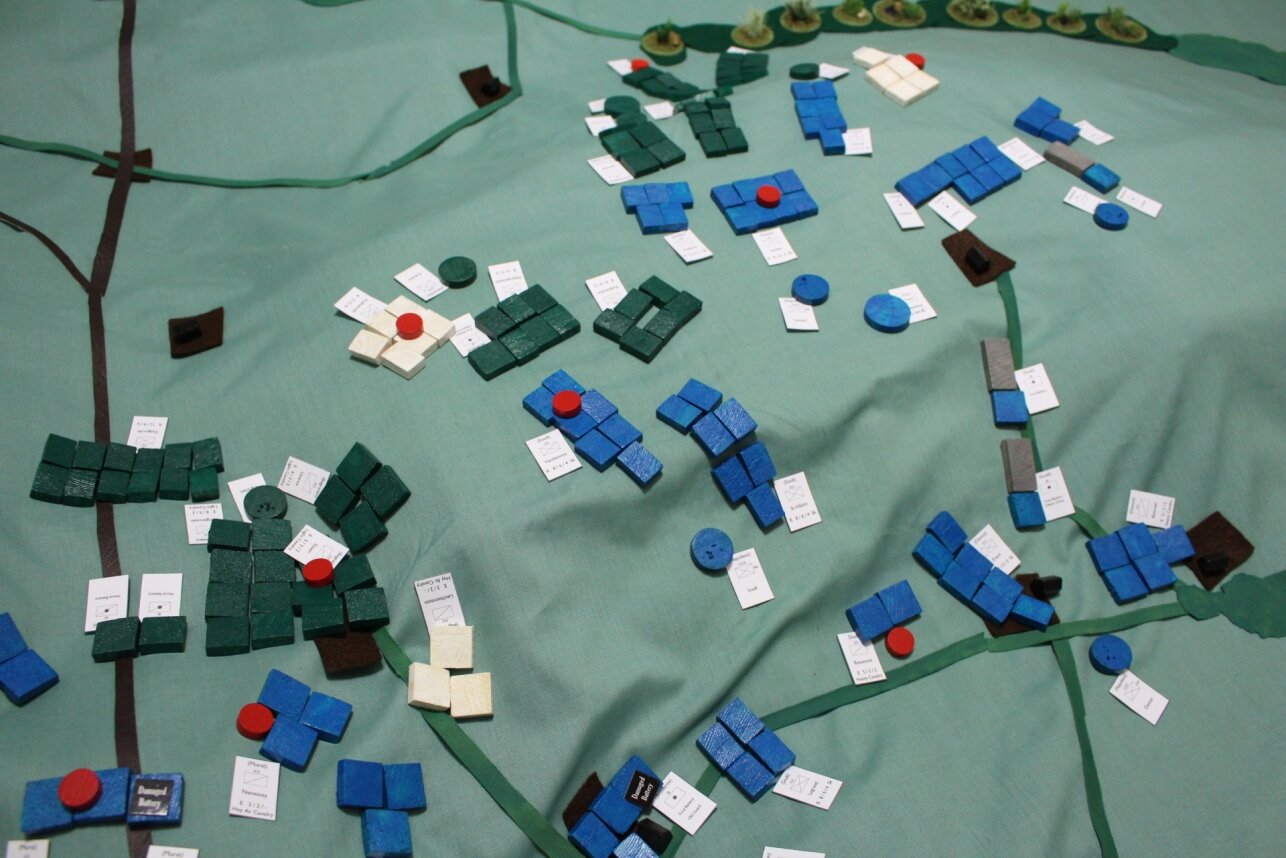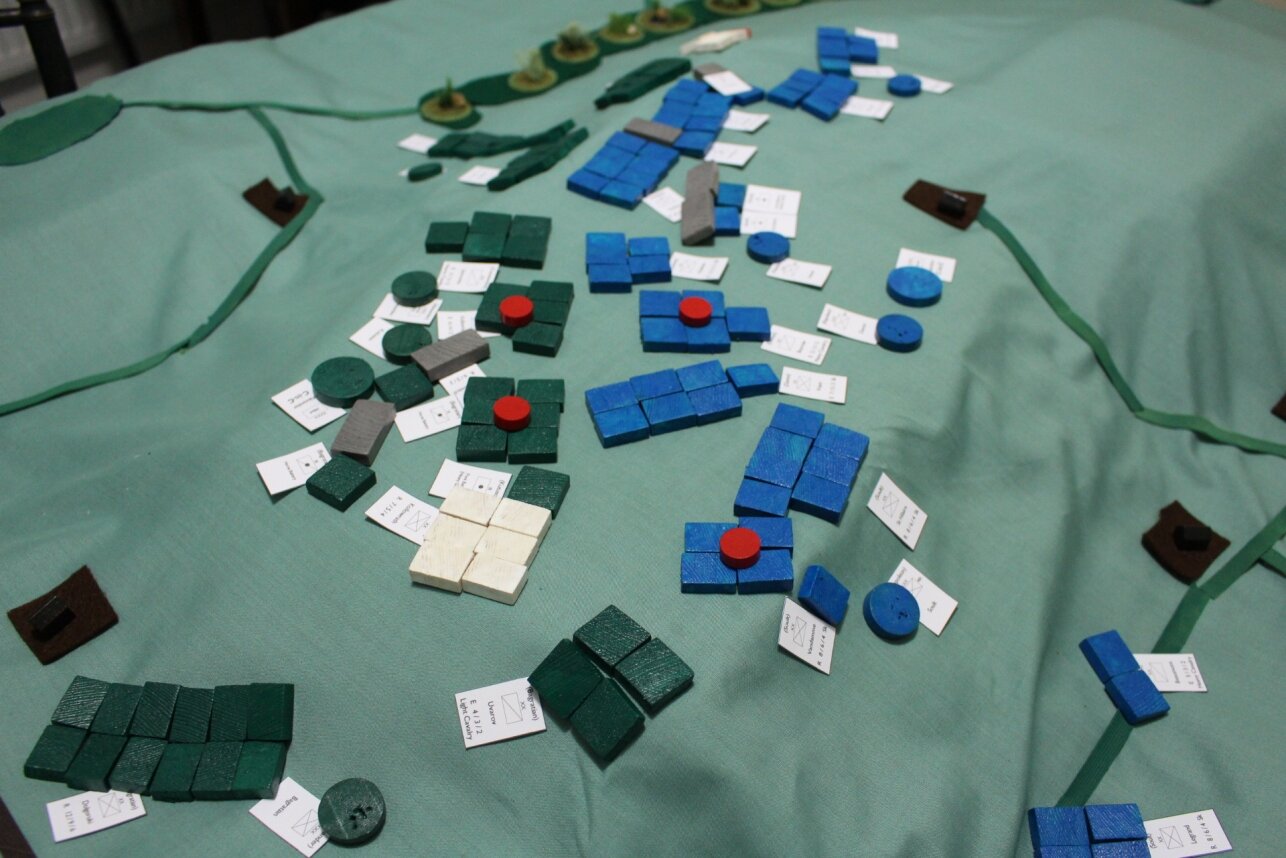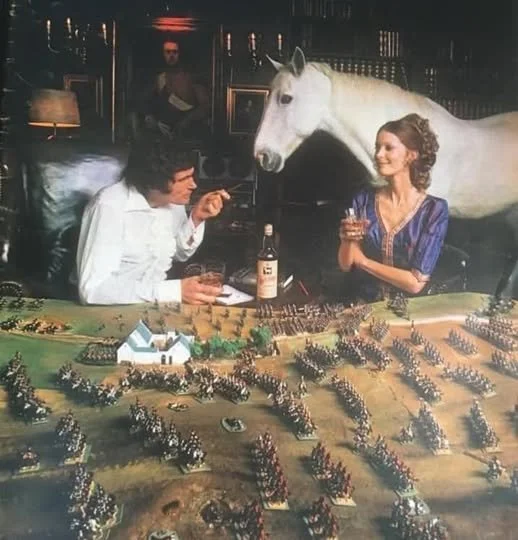Sharp Practice AAR: Pizzeria
/My first game at this year’s Operation Market Larden Lardy Day was a game of Sharp Practice set in northern Italy. Those naughty French revolutionaries were terrorising the area foraging for food and Iwould play as 2iC of an Austrian force sent to stop them.
The marauding French arrived and proved annoyingly fleet of food, making their way almost right through the town before us Austrians had much of a chance to stop them.
Finally, however, the Austrians got a decent run of cards and managed to get most of their force onto the table. The skirmishers and infantry in the centre are the troops under my command.
My skirmishers opened fire on the French behind the damaged wall, and did a satisfactory amount of casualties, but then strayed too close and got shot down in their turn, the survivors forced to retreat.
Meanwhile, my infantry had deployed into line and opened fire themselves, shooting down some French voltigeurs who then, being very drunk, charged us. The line opened fire again, and the French skirmishers ceased to exist!
We were a bit penned up in our corner of the battlefield, so needed to create some space for manouevre. My commander therefore sent the cavalry on the left forward with the aim of engaging the French Hussars who were making their way round onto our flank.
The initial charge successfully wiped out more French voltigeurs but failed to reach the Hussars who, in a cowardly fashion, refused to counter-charge but fled forward further round our flank.
The action then switched to the other side of the field, where more French cavalry, Dragoons this time, were makign their way around to our other flank.
The Grenzers deployed ready to repel the froggie horsemen, but in doing so unfortunately exposed their flank to some French Grenadiers, who punished them with a terrible series of musket volleys.
My main infantry line had been blazing away at the Grenadiers and had dropped a few of them, but those pesky French Hussars were still creeping around our left flank.
The arrival of the French Hussars combined with the shooting from the ruined church had forced my colleague’s infantry to retreat a bit in some confusion, and they were then charged and largely destroyed by said French cavalry, leaving my brave boys effectively surrounded!
With only my infantry unit left in a position to carry on the fight, and them now effectively surrounded, there was nothing for it but to gracefully surrender. The French had won the day!
A great game of Sharp Practice and one where we were just overwhelmed by the French. My thanks to the umpire and all the other players, one of whom at least will be grateful for the fact that I haven’t said it was all his fault that we lost by exposing the flank of our Grenzers!












































